 W
WMilitary humor is humor based on stereotypes of military life. Military humor portrays a wide range of characters and situations in the armed forces. It comes in a wide array of cultures and tastes, making use of burlesque, cartoons, comic strips, double entendre, exaggeration, jokes, parody, gallows humor, pranks, ridicule and sarcasm.
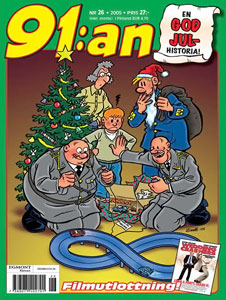 W
W91:an is a popular Swedish comic strip, first created in 1932 with the title En beväringsmans upplevelser och äventyr. This name soon changed to 91:an Karlsson, by Rudolf Petersson. It is now published in its own bi-weekly comic book, 91:an, and also as a single strip in the popular weekly women's magazine Året Runt.
 W
WAll Select Comics is a 1943-1945 American comic book series published by Timely Comics, the 1940s predecessor of Marvel Comics, during the period fans and historians call the Golden Age of comic books. An omnibus series with several different superhero and other features each issue, it primarily starred Captain America and the original Human Torch, two of Timely's most popular characters, as well as fellow Timely star the Sub-Mariner in several.
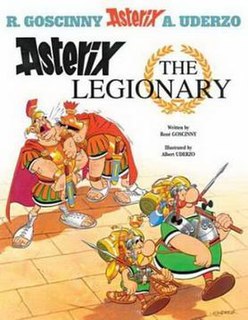 W
WAsterix the Legionary is the tenth Asterix book in the Asterix comic book series by Rene Goscinny and Albert Uderzo. It was first published as a serial in Pilote magazine, issues 368–389, in 1966.
 W
WThe Bandy Papers is a series of novels chronicling the exploits of a World War I fighter ace named Bartholomew Wolfe Bandy. The author, Donald Jack, himself served in the RAF during World War II. Every book in the Bandy Papers series contains the word "me" in the title, as do many of the chapter titles, which can also be interpreted as photo captions. The first novel was Three Cheers for Me (1962), but it was later expanded into three books, the first three below, one of which was then republished in two parts:Three Cheers for Me (1973) That's Me in the Middle (1973) It's Me Again (1975), also published in two volumes as It's Me Again and Me Among the Ruins Me Bandy, You Cissie (1979) Me Too (1983) This One's On Me (1987) Me So Far (1989) Hitler vs. Me (1996) Stalin vs. Me (2005)
 W
WBeetle Bailey is an American comic strip created by cartoonist Mort Walker, published since September 4, 1950. It is set on a fictional United States Army post. In the years just before Walker's death in 2018, it was among the oldest comic strips still being produced by its original creator. Over the years, Mort Walker had been assisted by Jerry Dumas, Bob Gustafson, Frank Johnson and Walker's sons, Neal, Brian and Greg Walker, who are continuing the strip after his death.
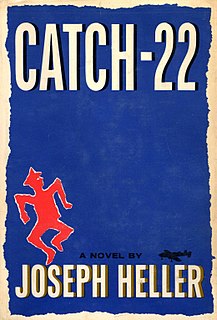 W
WCatch-22 is a satirical war novel by American author Joseph Heller. He began writing it in 1953; the novel was first published in 1961. Often cited as one of the most significant novels of the twentieth century, it uses a distinctive non-chronological third-person omniscient narration, describing events from the points of view of different characters. The separate storylines are out of sequence so the timeline develops along with the plot.
 W
WChipped beef is a form of pressed, salted and dried beef that has been sliced into thin pieces. Some makers smoke the dried beef for more flavor. The modern product consists of small, thin, flexible leaves of partially dried beef, generally sold compressed together in jars or flat in plastic packets. The processed meat producer Hormel once described it as "an air-dried product that is similar to bresaola, but not as tasty."
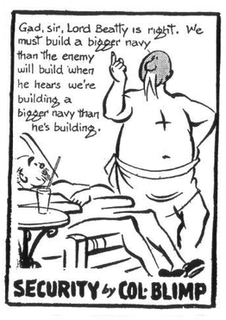 W
WColonel Blimp is a British cartoon character by cartoonist David Low, first drawn for Lord Beaverbrook's London Evening Standard in April 1934. Blimp is pompous, irascible, jingoistic, and stereotypically British, identifiable by his walrus moustache and the interjection "Gad, Sir!"
 W
WChipped beef is a form of pressed, salted and dried beef that has been sliced into thin pieces. Some makers smoke the dried beef for more flavor. The modern product consists of small, thin, flexible leaves of partially dried beef, generally sold compressed together in jars or flat in plastic packets. The processed meat producer Hormel once described it as "an air-dried product that is similar to bresaola, but not as tasty."
 W
WDenis Vasilyevich Davydov was a Russian soldier-poet of the Napoleonic Wars who invented the genre of hussar poetry, characterised by hedonism and bravado. He used events from his own life to illustrate such poetry.
 W
WDuffel Blog is an American military news satire organization featuring satirical articles reporting on national security and US military topics. It is often described as "the military version of The Onion." It was founded in March 2012 by Marine veteran Paul Szoldra, originally as a way to drive web traffic to the now defunct website CollegeVeteran.com.
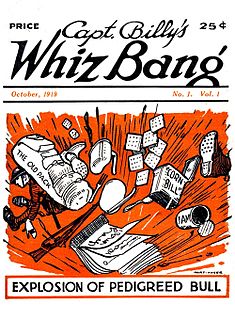 W
WFawcett Publications was an American publishing company founded in 1919 in Robbinsdale, Minnesota by Wilford Hamilton "Captain Billy" Fawcett (1885–1940).
 W
WForrest Gump is a 1986 novel by Winston Groom. The title character retells adventures ranging from shrimp boating and ping pong championships, to thinking about his childhood love, as he bumbles his way through American history, with everything from the Vietnam War to college football becoming part of the story.
 W
WThe Good Soldier Švejk is an unfinished satirical dark comedy novel by Czech writer Jaroslav Hašek published in 1921–1923. It centers on a good-humored, simple-minded middle-aged man who is enthusiastic to serve Austria-Hungary during World War I.
 W
WForrest Alexander Gump is a fictional character and the protagonist of the 1986 novel by Winston Groom, Robert Zemeckis's 1994 film of the same name, and Gump and Co., the written sequel to Groom's novel. In the film, Forrest is a philanthropist and a war veteran, businessman, and college football player who bears witness to various significant occurrences in the 20th century. He exudes a compassionate, optimistic, and tenacious attitude in the face of countless setbacks and strives to help every person he meets despite his strong naivety. Throughout his life, he maintains a sincere love for his childhood friend Jennifer Curran, who eventually becomes his wife. Tom Hanks portrayed the character in the film and earned an Academy Award for his performance, while Michael Conner Humphreys portrayed Forrest as a child.
 W
WGunston Street is a weekly comic strip that is written and illustrated by Basil Zaviski. The main character Phil, is based on Basil's father Phillip Zaviski, who served with Basil in the same National Guard Unit for over 7 years. Although the main character is based on his father, the strips are that of Basil Zaviski's experiences. The heavy leaning storyline of the main character "Phil" tends to focus on the life and times of your average Army National Guardsman and their daily struggles with deployments, family and combat.
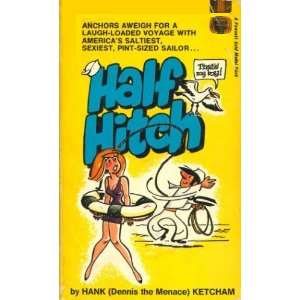 W
WHalf Hitch was an American comic strip by Hank Ketcham, in syndication between 1943 and 1945. It was an example of military humor, but unlike most cartoons and comics, focused on the navy, rather than the army. The unnamed character first appeared in The Saturday Evening Post in 1943.
 W
WAn impossible trident, also known as an impossible fork, blivet, poiuyt, or devil's tuning fork, is a drawing of an impossible object, a kind of an optical illusion. It appears to have three cylindrical prongs at one end which then mysteriously transform into two rectangular prongs at the other end.
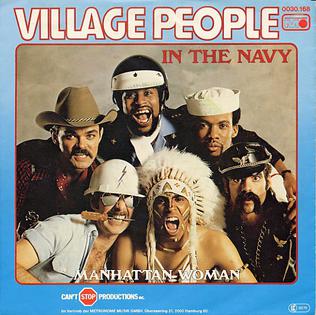 W
W"In the Navy" is a song by the American disco group Village People. It was released as the first single from their fourth studio album Go West. "In the Navy" was the last Top 10 hit for the group in the United States.
 W
WKilroy was here is an American symbol that became popular during World War II, typically seen in graffiti. Its origin is debated, but the phrase and the distinctive accompanying doodle became associated with GIs in the 1940s: a bald-headed man with a prominent nose peeking over a wall with his fingers clutching the wall.
 W
WChris Kuzneski is an American novelist. His eleventh novel, The Prisoner's Gold, won the Thriller Award for the 2016 Book of the Year at a gala hosted by the International Thriller Writers (ITW) in New York City on July 9, 2016. His works have also been honored by the Florida Book Awards and named a Literary Guild's featured selection.
 W
WMarmittone is an Italian comic strip series created by Bruno Angoletta.
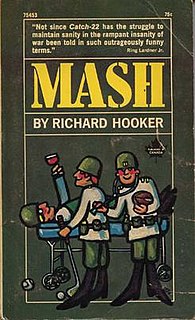 W
WThe M*A*S*H book series includes the original novel that inspired the movie and then the TV series. The first, MASH: A Novel About Three Army Doctors, was co-authored by H. Richard Hornberger and W. C. Heinz ; it was published in 1968 under the pen name Richard Hooker. It told the story of a U.S. Mobile Army Surgical Hospital in Korea during the Korean War. In 1972, Hornberger published the sequel M*A*S*H Goes to Maine, covering the lives of the surgeons after they returned home from the war.
 W
WMASH: A Novel About Three Army Doctors is a 1968 novel by Richard Hooker which is notable as the inspiration for the feature film M*A*S*H (1970) and the TV series of the same name (1972–1983). The novel is about a fictional U.S. Mobile Army Surgical Hospital in Korea during the Korean War.
 W
WWilliam Henry Mauldin was an American editorial cartoonist who won two Pulitzer Prizes for his work. He was most famous for his World War II cartoons depicting American soldiers, as represented by the archetypal characters Willie and Joe, two weary and bedraggled infantry troopers who stoically endure the difficulties and dangers of duty in the field. His cartoons were popular with soldiers throughout Europe, and with civilians in the United States as well. However, his second Pulitzer Prize was for a cartoon published in 1958, and possibly his best-known cartoon was after the Kennedy assassination.
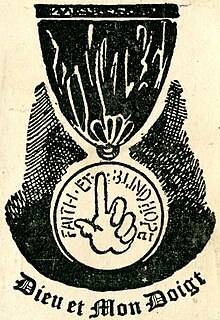 W
WThe Most Highly Derogatory Order of the Irremovable Finger, abbreviated to MHDOIF, was a spoof decoration for military incompetence, which was "awarded" to members of the Royal Air Force during World War II.
 W
WNo Time for Sergeants is a 1954 best-selling novel by Mac Hyman, which was later adapted into a teleplay on The United States Steel Hour, a popular Broadway play and 1958 motion picture, as well as a 1964 television series. The book chronicles the misadventures of a country bumpkin named Will Stockdale who is drafted into the U.S. Army during World War II and assigned to the United States Army Air Forces. Hyman was in the Army Air Forces during World War II when it was part of the US Army.
 W
WPresent Arms is a Broadway musical comedy that opened April 26, 1928, with music by Richard Rodgers, and lyrics by Lorenz Hart. It is based on the book by Herbert Fields. It was produced by Lew Fields with musical numbers stage by Busby Berkeley. It ran for 155 performances at the Lew Fields' Mansfield Theatre, which today is known as the Brooks Atkinson Theatre. Present Arms was filmed in 1930 with Irene Dunne, with its title changed to Leathernecking. The film is presumed lost.
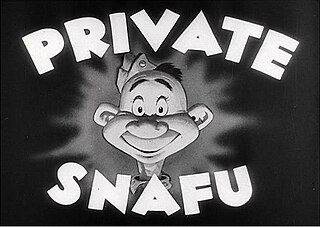 W
WPrivate Snafu is the title character of a series of black-and-white American instructional adult animated shorts, ironic and humorous in tone, that were produced between 1943 and 1945 during World War II. The films were designed to instruct service personnel about security, proper sanitation habits, booby traps and other military subjects, and to improve troop morale. Primarily, they demonstrate the negative consequences of doing things wrong. The main character's name is a play on the military slang acronym SNAFU, "Situation Normal: All Fucked Up."
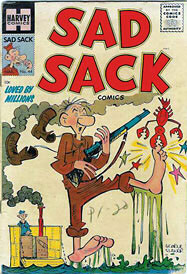 W
WSad Sack is an American comic strip and comic book character created by Sgt. George Baker during World War II. Set in the United States Army, Sad Sack depicted an otherwise unnamed, lowly private experiencing some of the absurdities and humiliations of military life. The title was a euphemistic shortening of the military slang "sad sack of shit", common during World War II. The phrase has come to mean "an inept person" or "inept soldier".
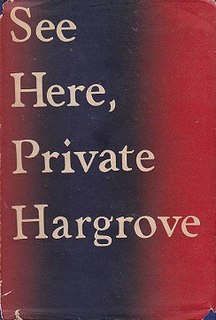 W
WSee Here, Private Hargrove (1942) is a book by journalist Marion Hargrove about the author's experiences as a soldier in the U.S. Army during World War II.
 W
WChipped beef is a form of pressed, salted and dried beef that has been sliced into thin pieces. Some makers smoke the dried beef for more flavor. The modern product consists of small, thin, flexible leaves of partially dried beef, generally sold compressed together in jars or flat in plastic packets. The processed meat producer Hormel once described it as "an air-dried product that is similar to bresaola, but not as tasty."
 W
WTonkin Gulf Yacht Club was a tongue-in-cheek nickname for the United States Seventh Fleet during the Vietnam War. Throughout the War in Vietnam, the Seventh Fleet engaged in combat operations against enemy forces through attack carrier air strikes, naval gunfire support, amphibious operations, patrol and reconnaissance operations and mine warfare.
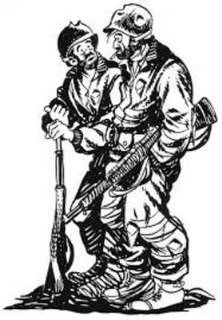 W
WWillie and Joe are stock characters representing United States infantry soldiers during World War II. They were created and drawn by American cartoonist Bill Mauldin from 1940 to 1948, with occasional additional drawings until 1998. They were published in a gag cartoon format, first in the 45th Division News, then Stars and Stripes, and starting in 1944, a syndicated newspaper cartoon distributed by United Feature Syndicate.
 W
WThe Wipers Times was a trench magazine that was published by British soldiers fighting in the Ypres Salient during the First World War.